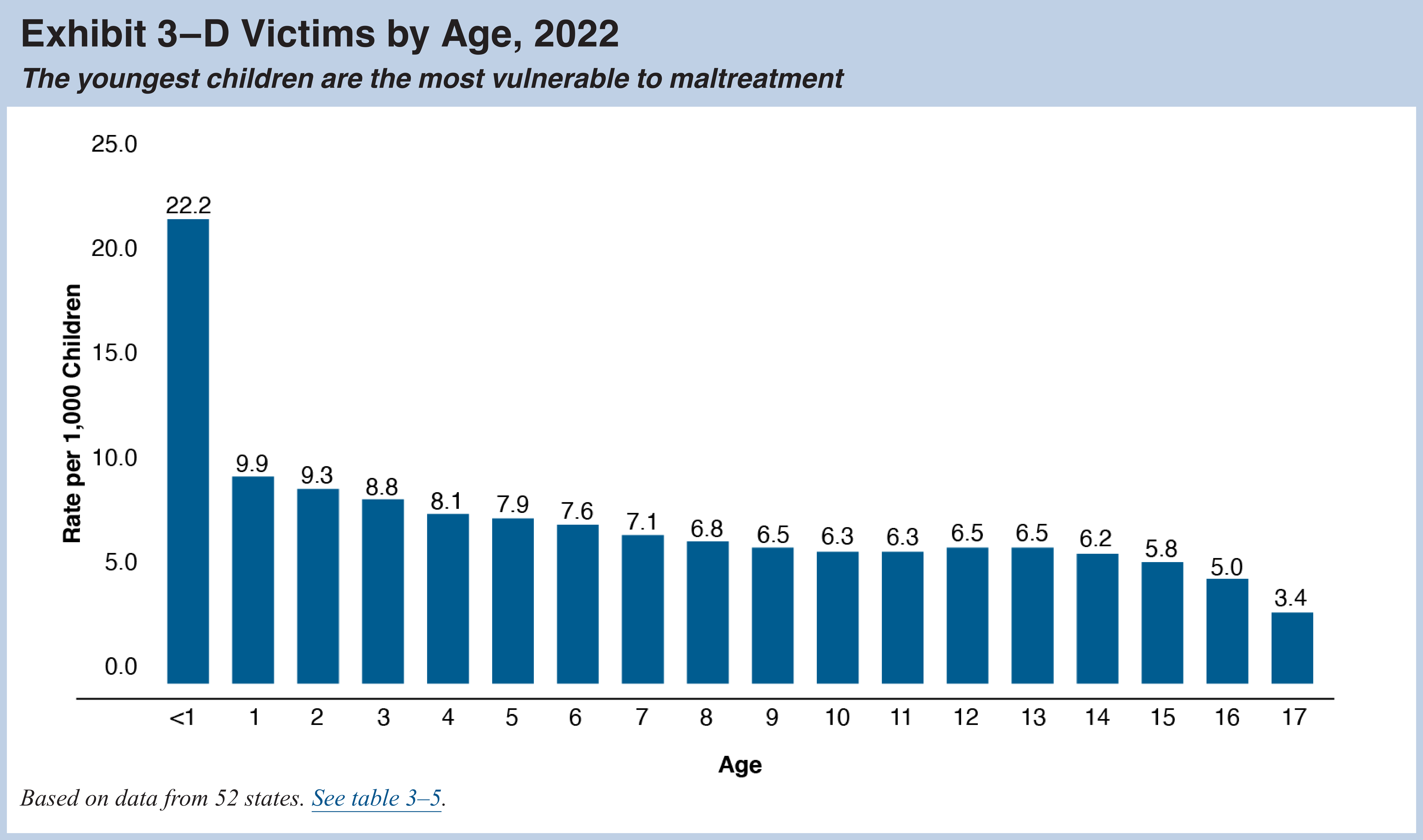Rodger Williams
Updated February 16, 2024
Public school advocates maintain that their schools protect students from child abuse because of mandatory reporters. But Federal data fails to support that assumption.
Younger children are subject to higher rates of abuse and fatalities than older children according to U.S. Department of Health and Human Services data (Exhibit 3-D and Exhibit 4-B).
The decline in abuse rates as children get older is generally smooth, with no abrupt changes (except for the large drop when the child turns one year old). This has been the same pattern since HHS started graphing these statistics in 2015.

Child Abuse by Age 2022
Graph reproduced from Child Maltreatment 2022, p. 22

Child Abuse Fatalities by Age 2022
Graph reproduced from Child Maltreatment 2022, p. 54
The child abuse fatalities data highlights the lack of protection a little differently. There is a clear pattern in fatality rates as they asymptotically head lower towards a rough steady state as children move from preschool age to school age. Again, there is no apparent sign that children are suddenly protected from abuse-related fatalities when they start school.
Conclusion

